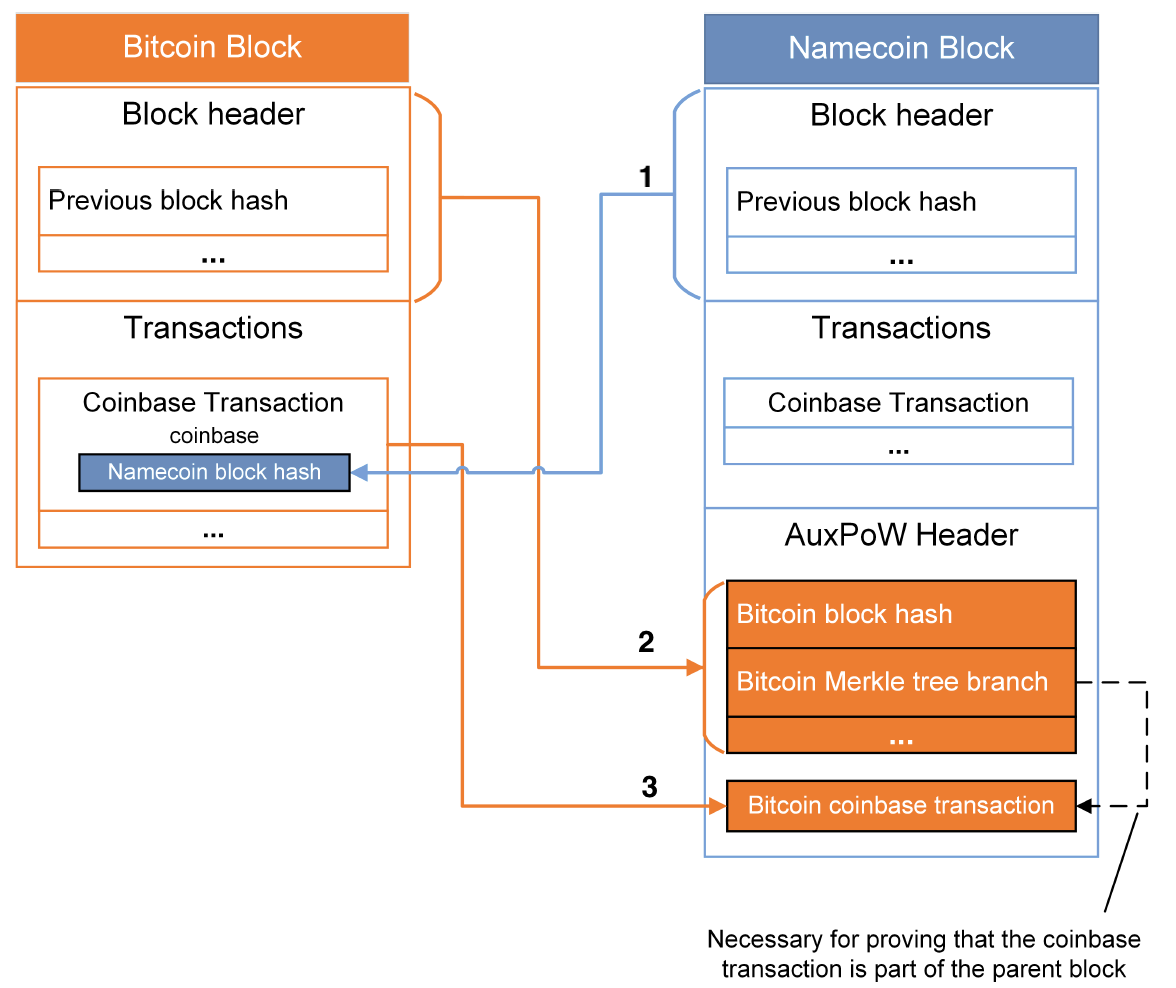Whereas Bitcoin’s Hashrate Stays Sky-Excessive, Merge-Mined Crypto Asset Networks Profit – Mining Bitcoin Information
In current occasions, Bitcoin’s hashrate has been constantly above 300 exahash per second (EH/s) as a number of mining swimming pools dedicate vital hashpower to the Bitcoin blockchain at this time. Apparently, among the world’s high bitcoin mining swimming pools are additionally utilizing their hashrate to merge-mine different cash, and these networks have benefited from bitcoin’s elevated hashrate.
How Bitcoin’s Hashrate Advantages Different Crypto Networks
Bitcoin’s hashrate secures the community and gives rewards for miners taking part within the system, however mining swimming pools additionally dedicate computational energy to networks like Namecoin, Elastos, Emercoin, and Vcash. For instance, Namecoin has a hashrate of round 187 EH/s at this time, and among the high bitcoin mining swimming pools merge-mine the community to accumulate namecoin (NMC) rewards.
Merge mining is a course of during which miners can mine varied cryptocurrencies on the identical time with none further price. Merged mining is much like an individual taking part in Pac-Man and Asteroids on the identical time, utilizing the identical joystick and incomes rewards for each video games. Namecoin was the primary cryptocurrency venture to be merge-mined, because it shares the identical SHA256 algorithm as Bitcoin, and the primary merge-mined block on the community was mined on Sept. 19, 2011.

Bitcoin swimming pools that dedicate hashrate to the Namecoin chain embrace F2pool, Viabtc, Poolin, and Mining Dutch. Whereas F2pool is the fourth largest bitcoin mining pool over the past three days, it’s the biggest namecoin miner because it dedicates its whole 44 EH/s to the Namecoin community. Viabtc dedicates 26.25 EH/s to the Namecoin chain, and Poolin factors 5.10 EH/s towards Namecoin as properly. On the time of writing, a single namecoin (NMC) is value $1.24 per unit and 12.5 NMC plus charges are distributed in every block reward.

Namecoin has the second-largest hashrate amongst SHA256 blockchains, however the Emercoin (EMC) community is the third-largest underneath BTC and NMC. EMC has 93.38 EH/s devoted to the community, and Mining Dutch and Viabtc are the highest miners for the coin. Viabtc, which is BTC’s fifth-largest mining pool by hashrate, additionally dedicates 26.76 EH/s to EMC. The Emercoin community leverages a hybrid proof-of-work (PoW) and proof-of-stake (PoS) consensus mechanism. A single emercoin (EMC) is at present altering arms for $0.0088 per coin.
In the meantime, Viabtc dedicates the identical quantity of hashrate to the Syscoin (SYS) community, one other hybrid PoW and PoS blockchain. As we speak, a single SYS trades for $0.167 in opposition to the U.S. greenback. Along with the aforementioned PoW cryptocurrencies that leverage the SHA256 consensus algorithm, miners are additionally dedicating hashrate to networks reminiscent of Xaya, Veil, Hathor, Elastos, and Vcash. Older cryptocurrency networks like Terracoin (TRC) and Unobtanium (UNO) additionally see a small fraction of SHA256 hashrate.
F2pool dedicates 44.32 EH/s to Vcash, however the coin’s native asset has no listed worth on any of the highest coin market aggregation websites. Elastos has over 100 exahash devoted to the chain, and high mining swimming pools like Antpool, F2pool, Viabtc, and Mining Dutch are dedicating hashrate to the Elastos community. Present statistics additional present that 100 exahash per second can also be devoted to the RSK sensible contract community.
What do you suppose the longer term holds for merge mining and the relationships between completely different blockchain networks? Share your ideas within the feedback part beneath.
Picture Credit: Shutterstock, Pixabay, Wiki Commons, Tari Labs College, miningpoolstats.stream
Disclaimer: This text is for informational functions solely. It isn’t a direct provide or solicitation of a proposal to purchase or promote, or a advice or endorsement of any merchandise, companies, or firms. Bitcoin.com doesn’t present funding, tax, authorized, or accounting recommendation. Neither the corporate nor the writer is accountable, instantly or not directly, for any injury or loss induced or alleged to be attributable to or in reference to using or reliance on any content material, items or companies talked about on this article.

